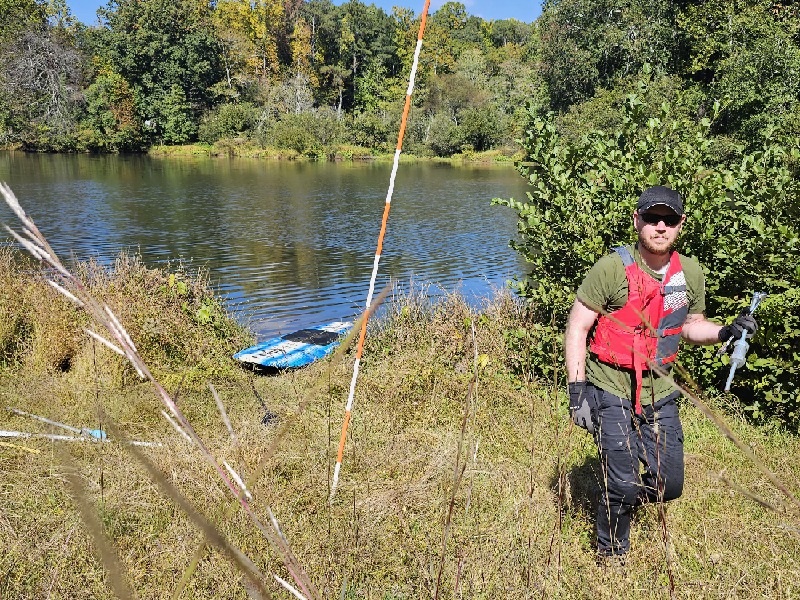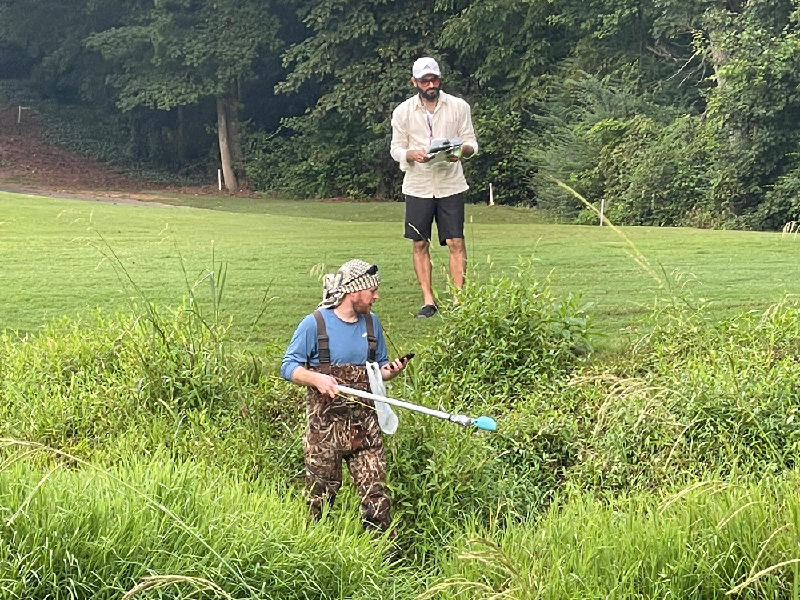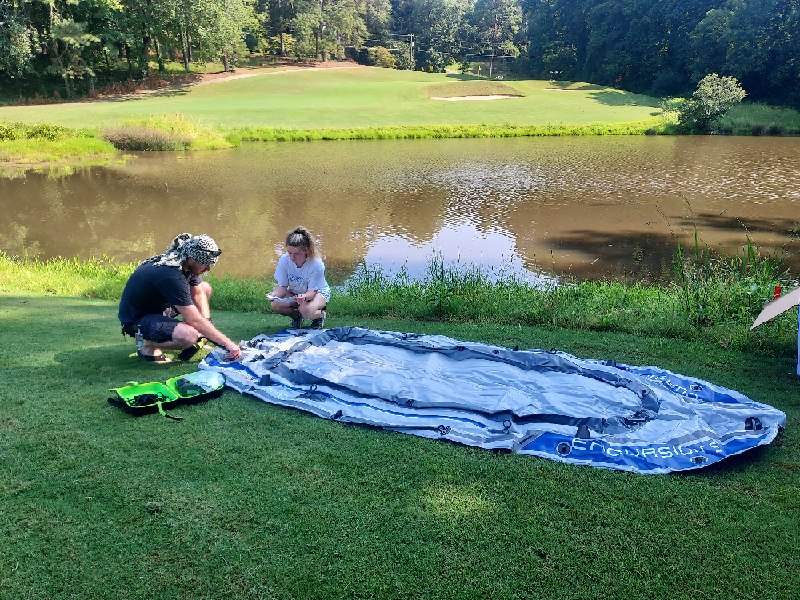Norman J. Radow College Senior Tristan Bollenbaugh Connects Field Research in Frey Lake to Childhood Goals
KENNESAW, Ga. (Aug 29, 2024) — Tristan Bollenbaugh is a Norman J. Radow College senior majoring in Geospatial Sciences with a Human Environmental Systems concentration, and a minor in Geography. With encouragement from Assistant Professor of Geography and Geospatial Sciences Ranbir Kang, Ph.D., he applied for, and received, an Undergraduate Research and Creative Activities (URCA) fund grant from the Office of Undergraduate Research. He applied the grant to the research project “Spatial Pattern of Sedimentation and Bed Roughness in a local Fresh Water Reservoir: A Case Study of Frey Lake in Georgia.” Bollenbaugh found that his field research was a balance between crunching volumes of data on the computer and getting his feet wet in the great outdoors in Frey Lake taking sediment measurements. The outdoor field study breathed life into his youthful desire to work outside an office setting.

“The irony is I grew up in the desert and I work with water,” he said. “I was interested in research, mostly because I [would] really like to work for the National Park Service in either resources or interpretation, so it’s the research aspect and having that experience. Especially if I’m looking more at a resources type of position where you’re going out doing field work, you’re collecting samples, you’re taking measurements.”
Bollenbaugh began this research project as a junior and hopes to continue working with Assistant Professor Kang, who is the Principal Investigator (PI), during his senior year. A longer-term goal is to produce a paper as co-authors for publication in a scientific journal. In the short term, the data they have collected has more immediate practical applications.
Bollenbaugh fully understands what impact this research could have on his future. “My idea was that it’s going to help me be more competitive in applying for positions with natural parks or National Park Service or Department of Natural Resources or Fish and Wildlife or any of those kind of organizations geared toward conservation,” he said. This is a future he envisioned for himself in his late teens and early 20s, but did not pursue right out of high school.
As a non-traditional student, he spent four years in service with the Unites States Marine Corps., and then another six years working in the software industry. With a little more than 10 years between high school graduation and enrolling at Kennesaw State University, he says he has a better appreciation for earning his degree, “I would say, it’s more meaningful because, I’ll be honest, at 18 years old, the only reason I’d go to college is ‘cause everyone said, ‘hey, you gotta go to college.’ I wouldn’t be going to college because I wanted to, and I would have been a terrible college student at 18. Going back to school after having some world experience, I think you appreciate it more.”

Assistant Professor Kang said of Bollenbaugh’s work that there are multiple layers
of benefits that come from it, including that “He is doing this analytical work, which
is real-world applied research and that really makes him very competitive and much
more successful with his post baccalaureate career.”
The work Bollenbaugh is engaged in is a longitudinal study that supports the research
Dr. Kang has been conducting for several years, which is to study silt accumulation
in smaller bodies of water that serve as a resource to surrounding communities. Frey
Lake is a human-made water feature created by an earthen dam on the Pinetree Country
Club golf course next to the western edge of KSU’s campus; it was originally used
as a drinking water resource and today is a golf course water feature and habitat
for wildlife.
Kang and Bollenbaugh approached the club’s management to secure permission to conduct the sediment study. In return, the golf course will use the highly detailed data to decide whether, where, and/or how much accumulated silt to dredge from the lake. This partnership between the golf club and Radow College is mutually beneficial. The college has access to a nearby field study location that provides an opportunity for students to conduct important, hands-on research gaining practical experience, while the golf club gets the benefit of detailed information at no cost on which they can base their decisions.
The results deliver detailed mapping of the worst areas for silt accumulation enabling them to target specific areas of the lake instead of the whole thing. This selective dredging is more cost effective and environmentally friendly. Bollenbaugh said, we “can save them some money without really disturbing the whole [lake] because you know, when you start sucking the sediment up off the ground, you’re going to disrupt that habitat.”
Assistant Professor Kang has nothing but praise for Bollenbaugh’s work saying, “…his commitment, his sincerity, his maturity, his attention to detail, and his writing skills, the way he communicates he is socially very competent. Above all [he] is very experienced and knows the nitty gritty of technologies, [he is] very technologically savvy.”

Bollenbaugh explained the pressure from the silt on the dam can trigger more frequent flooding because the lake becomes less able to hold high volumes of rain. Additionally, habitat is lost for fish, turtles, and other wildlife. Because the lake is contained by an earthen dam, there is potential for spillover in heavy rains, increased erosion, or even dam failure due to the increased pressure on its walls.
Bollenbaugh says he was never one to enjoy sitting at a desk. Although part of the job is to input and interpret data in an office setting, this research project reinforced his childhood vison of working outside in a natural environment. His choice to use his GI benefits to go back to school for his degree has brought him full circle to what he envisioned himself doing in his late teens.
This past summer Bollenbaugh moved to northern Minnesota with his girlfriend of 10 years who is also a KSU graduate. She secured a position with the National Park Service as a program administrator. He will complete his senior year on-line and is working out whether he will be able to return to walk for graduation. Until then, he is on track to earn his degree from the Norman J. Radow College of Humanities and Sciences’ Department of Geography and Anthropology.











